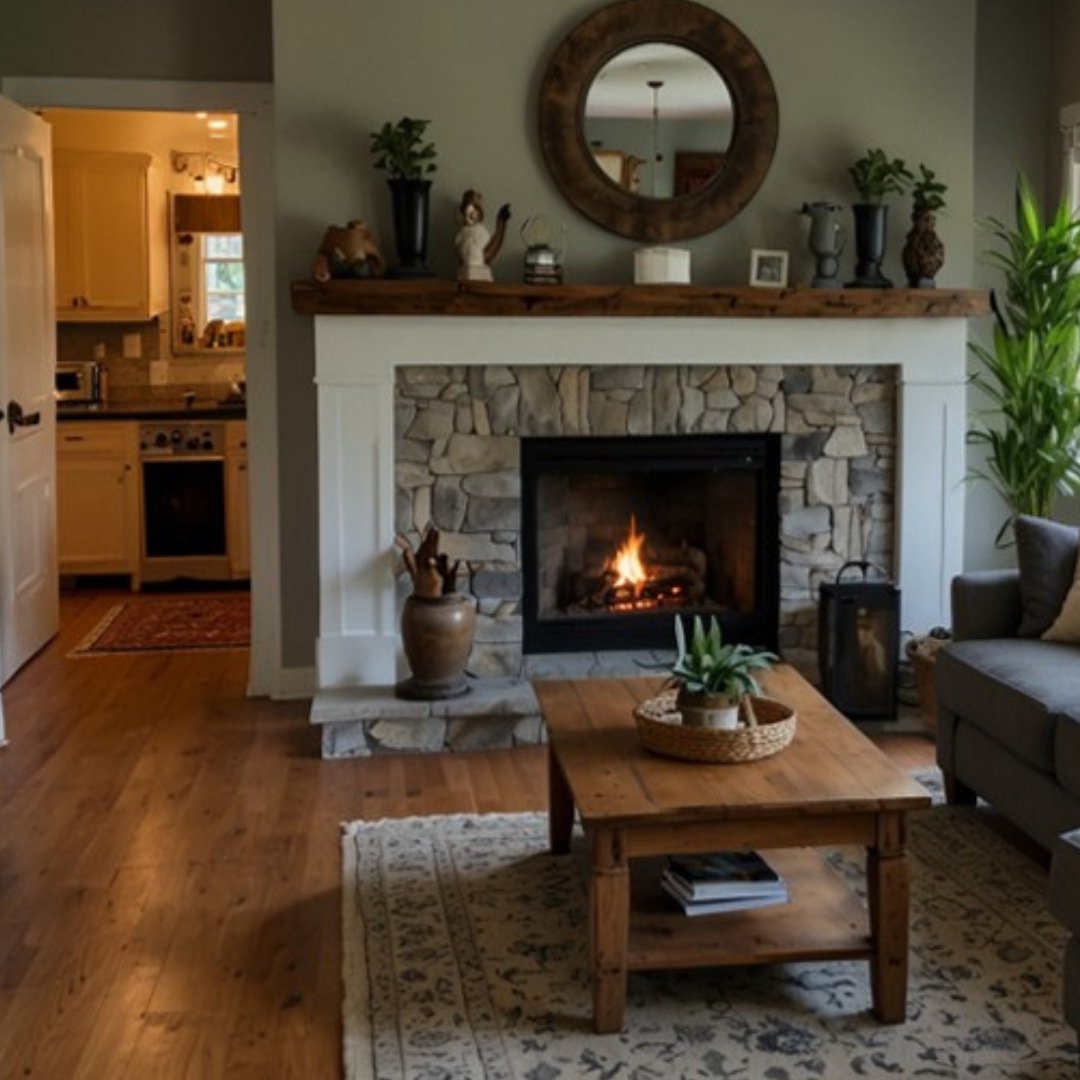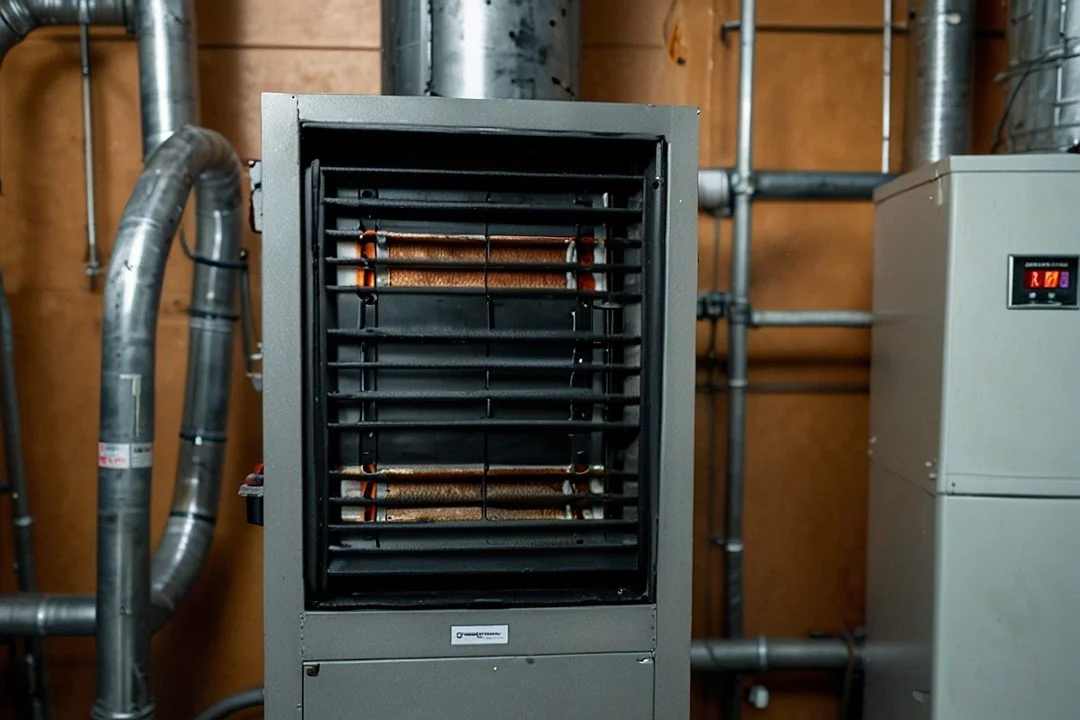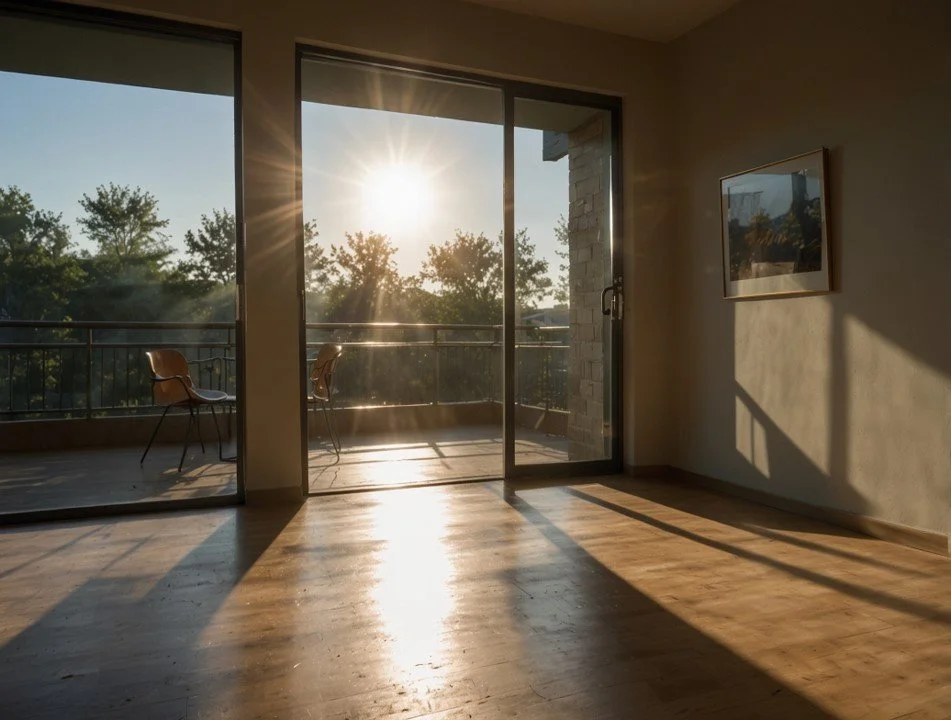By Mark Henderson
During chilly seasons, most homeowners want to keep their homes cozy, and a furnace plays a crucial role in doing that. But here's the thing, there's more to the equation than just heat; is it the right size of furnace for your home?
While energy efficiency is certainly important– with models showing the ENERGY STAR® label offering up to 15% greater efficiency than standard models – selecting a furnace with the correct capacity is equally important. (1)
For one, selecting the right size furnace guarantees better comfort in every corner of your home. It also helps control your heating costs by preventing unnecessary energy waste.
Today, we'll get into the important factors that affect choosing the right furnace size, so you can make a well-informed decision. Ready?
Home size (square footage)
The biggest factor influencing new furnace selection is your home size.
Here's the logic: a larger house naturally requires a furnace with a greater capacity to deliver sufficient warmth throughout the entire space, right? However, it's important to consider only the heated square footage of your living area; exclude unheated areas like garages, sunrooms, or unfinished basements.
British Thermal Units, or BTUs, are the standard furnace heating capacity measurement unit; a furnace with a higher BTU rating generally produces more heat.
Most homes in the United States require between 30 and 60 BTUs per square foot. That's the general rule of thumb. But depending on your climate and for bigger homes, you may need more.
For instance, do you have a 1,500-square-foot house? In that case, your heating system should have a BTU output between 45,000 to 90,000 BTUs. (2)
However, if you notice that a furnace doesn't produce the required amount of heat, a furnace repair company can help ensure it continues to achieve and maintain comfortable temperatures.
Climate zone
Beyond the square footage of your home, another important thing influencing furnace size is your climate zone. Places with colder winters naturally require furnaces with a higher BTU output to combat the harsher temperatures.
A widely used system for classifying climate zones in the United States is the USDA Plant Hardiness Zone Map. It divides the country into different zones based on average annual minimum temperatures.
So, why is knowing your USDA Hardiness Zone important? You'll get insight into your heating demands based on it.
For instance, homes in Zone 3, which experiences very cold winters with minimum temperatures below -40°F (-40°C), will require a significantly larger furnace compared to a house situated in Zone 8, where winters are mild with minimum temperatures rarely dipping below 20°F (-6°C). (3)
Home construction and insulation
Think of your house as a container. A well-insulated home retains heat effectively; it minimizes the workload placed on your furnace to maintain comfortable temperatures. Conversely, a poorly insulated house allows heat to escape easily. It forces your furnace to work overtime to compensate for the heat loss.
Many things affect how well a home is insulated. The type and thickness of wall insulation, for instance. The windows and doors affect it, too; double-paned windows with low-emissivity (Low-E) coatings offer much better insulation compared to single-pane windows. Air sealing is also very important for preventing drafts and heat loss.
If you’re looking to buy insulation to improve your home’s energy efficiency, consider exploring options at Insulation4Less.
A trained auditor will identify areas experiencing heat loss, then recommend specific improvements. This helps you determine the appropriate size furnace you'll need.
Other factors
Note that the above considerations are simply a starting point. Several other factors come into play to determine the exact size furnace you'll need for optimal comfort and efficiency. They include:
Number of floors
Homes with multiple floors may require a furnace with a slightly higher BTU output. It's even more true if you have uneven insulation between levels.
Ductwork condition
The condition of your ductwork can significantly impact your furnace’s efficiency. Leaking or poorly insulated ducts allow heated air to escape before reaching vents.
This puts strain on your furnace, making it work harder to keep temperatures comfortable, leading to uneven heating. Consider factoring in potential repairs or replacements when determining furnace size in this case.
Sun exposure
South-facing homes tend to receive more natural sunlight during winter months. More sunlight means more warmth. So, you may be able to get a slightly lower BTU furnace.
These are just a handful of considerations. Their individual impact will vary. It will also still depend on your specific situation. So, it's always best to consult an HVAC service provider for proper furnace inspection and guidance.
Beyond the basics
Let's discuss two more additional considerations that go beyond the basics.
Furnace efficiency ratings (AFUE)
AFUE rating is a standardized measurement expressed as a percentage. It shows how well a furnace turns fuel into usable heat. For example, a furnace with an AFUE rating of 80% utilizes 80% of the fuel it consumes to generate heat. Where does the rest of it end up? 20% escapes as exhaust.
The benefits of high-AFEU furnaces are:
Energy savings: A more efficient furnace uses less fuel to produce the same amount of heat. That means lower energy bills.
Lower operating costs: Efficient furnaces often require less maintenance, too. That reduces operating expenses.
Single-stage vs. two-stage furnaces
Furnaces traditionally operate in single-stage mode. It means that they run at full capacity until the desired temperature is reached. They then cycle off until needed again. This isn't great because it leads to temperature fluctuations and less efficient operation.
How about two-stage furnaces? Well, they offer a more nuanced approach to comfort and efficiency. They operate in two stages:
Low stage: This furnace runs at a lower capacity during milder weather or when maintaining temperature. This usually means quieter operation and improved efficiency.
High stage: The furnace kicks into the high stage when a significant temperature boost is needed. It delivers full heating power this way.
Two-stage furnaces can provide more consistent comfort. But the initial cost may be slightly higher, too.
Final thoughts
Choosing the right size furnace for your home requires a comprehensive approach. Consider factors like climate zone, insulation levels, and even sun exposure in addition to square footage.
Consulting a qualified HVAC company is also best. They'll evaluate your home's specific needs and suggest the ideal size furnace. If you're from Canada, shoot some reliable HVAC professionals a message here.
Also, don't hesitate to get multiple quotes to compare pricing. The aim is to ensure you're investing wisely in your home's heating requirements.
References:
(1) "Why ENERGY STAR?", Source: https://www.energystar.gov/products/furnaces
(2) "Solved! What Size Furnace Do I Need?" Source: https://www.bobvila.com/articles/what-size-furnace-do-i-need/
(3) "2023 USDA Plant Hardiness Zone Map", Source: https://planthardiness.ars.usda.gov/
Read Next:
Compact Home Theaters: Achieving Big Sound In Small Rooms
Dreaming of a cinematic experience without the hefty price tag or space demands? Discover how compact home theaters offer immersive movie nights right in your living room. Explore space-saving setups, seating solutions, and speaker options to elevate your movie nights to new heights. Say goodbye to bulky equipment and hello to big sound in small spaces!
Join the Fun!
If you enjoyed this post and you want to keep seeing my weekly blog, the best way to do that is to subscribe.
You can subscribe by downloading my 11 Secrets Only Designers Know to Make Your Space Rock. If you’re curious about how decorators and designers make a home look magazine ready, you’ll love taking a gander at these 11 secrets. You’ll learn how to style your room from the floor up and it will work for ANY space you have.
I write about small space design and decorating, sustainable furniture options, positive self care and a variety of do-it-yourself home décor.
I’d love to connect with you!
“Michael Helwig was top-notch, very professional and responsive to my needs. He allowed me time to explore ideas and try out a variety of combinations until we found the perfect fit. Michael provided detailed information and offered beautiful ideas to make my dream living room become a reality. The furniture he sourced has totally transformed my living room space. Everyone that has seen my new living room has one word, WOW! A special thank you to Michael for a wonderful experience.”
“Michael was very knowledgeable and guided us, with great patience and good humor, through the process of designing our dining room and helping us find the perfect sleeper sofa. He offered really helpful advice when we asked questions - which was often - but at no time did we ever feel pushed. He helped me when I felt like I couldn’t make one more decision. When my new furniture finally arrived I realized everything down to the pillows was perfect. I couldn’t be happier!”
The opinions and views expressed in any guest blog post do not necessarily reflect those of Michael Helwig Interiors or its Principal, Michael Helwig. Michael Helwig Interiors, and Michael Helwig, do not have any affiliations with any products or services mentioned in the article or linked to therein. Guest Authors may have affiliations to products mentioned or linked to in their articles or bios.
Mark Henderson is a licensed and certified HVAC technician with over 10 years of experience keeping homes comfortable year-round. When he's not wrenching on furnaces or fine-tuning air conditioners, Mark enjoys tinkering with classic cars and exploring local hiking trails with his dog, Max. He finds writing blog posts a great way to share his HVAC knowledge and empower readers to keep their homes comfortable and efficient















